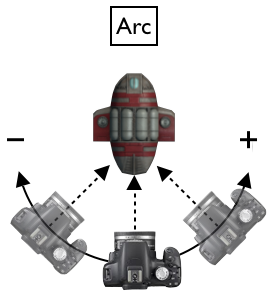
Camerawork-
- When the party is going on and then when Banjo and Combo burst in all the camera shots are hand held, which makes it more realistic and allows the audience to feel more like they’re there in the room.
- When Combo bursts in and tackles Woody there is a focus pull, which allows the audience to focus on the relationship between the two and also the history the apparently have together.
- When Shaun is talking to Combo there is a high-angle shot looking down at Combo and a low-angle shot looking up at Shaun, indicating that Shaun has more influence in the group than Combo because he has become part of the group while Combo has been away in prison. There are also high and low angle shots when Shaun and Smell are in the shed, but this time they are looking up at Smell and down at Shaun, indicating that Smell is older and more mature, as well as more experienced.
Sound design-
- When Shaun and Smell step outside the diegetic sounds of the punk party music playing inside are muffled and quietened to focus attention on them and their conversation. When they are in the shed there is no other sound at all apart from their dialogue and the exaggerated kissing sounds, which makes the scene more uncomfortable, and the lack of other sounds forces the audience to focus on them.
- The diegetic sounds of the party music stops when Banjo is knocking on the door, leaving only the sound of a clock ticking and their voices, which creates a feeling of tension.
- When Combo is telling his prison story the non-diegetic score of piano music in the minor key slowly fades in over the top as the diegetic sounds of Combo’s voice fades out, leaving only the piano music. This indicates that everyone there, bar people like Gadget and Pukey who are actually enjoying the story, is trying to block out Combo and his story with is very nationalist and racist views; they’re all annoyed that he has come in an effectively ruined their evening.
Editing–
- There is a yellow tint to the whole party scene inside the house that has been added post-production. This creates quite a cosy and homely feel to the scene and indicates that all the characters there feel safe together as a group.
- When Shaun and Smell are talking in the shed during the party, the shot reverse shot is used to show their conversation. There is also quite slow paced editing in this scene compared to the more fast paced editing used in the party when Banjo and Combo burst in.
- When Combo is telling his prison story the scene cut between close up shots of him telling the story and reaction shots of Woody, Lol, Gadget, Pukey and mainly Milky. We see how Woody and Lol are disappointed by Combo’s views and annoyed that he’s ruining the party, that Pukey and Gadget are actually the only ones really enjoying the story, and how Milky is hurt by and in disbelief of Combo’s racist comments.
Mise en scene-
- The skinhead group, with punk and new wave influence, is shown by the clothes and fashion styles that are worn by the group, such as the shaved heads, Doc Martin boots, rolled up jeans and checked long sleeved shirts with braces.
- Most of the emotion in the scene is conveyed by the actors and their facial expression; there’s no need for lots of dialogue. When Combo realises that Lol is in a relationship with Woody there is a flicker of dismay and sadness on his face, and when Shaun walks in and interrupts Combo’s story there is obvious annoyance on his face. Also when Combo is telling his story and the diegetic sound is gradually replaced by the non-diegetic sound, we can clearly understand what Woody and Lol are thinking and how they feel about Combo just by the looks that they share.
- Combo has a Liverpudlian accent which contrasts with the nondescript midlands accents of all the other characters. This hints that he is different to everyone else in the film, but not just by his accent; no one else seems to share his extreme nationalist views. He is an outsider and this is clear when he gate crashes the party and most of the people there are clearly not happy with his presence.

































